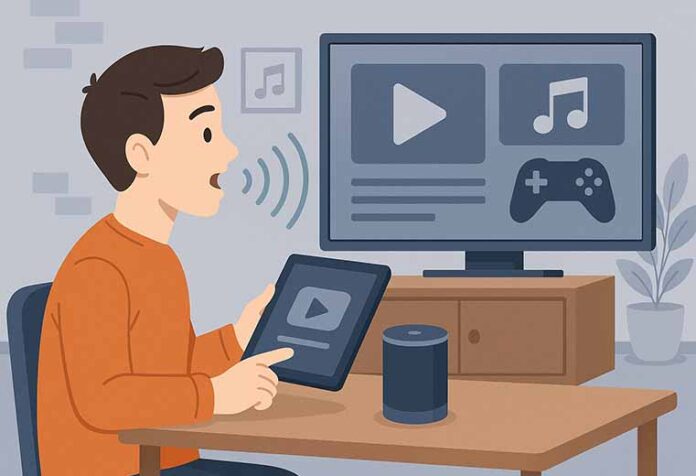Voice technology has become a silent revolution in how users navigate digital entertainment platforms. The convenience of using simple voice prompts to access a favorite movie, playlist, or show has elevated user interaction and drastically reduced screen time spent searching for content. Platforms that integrate voice-activated features are seeing improved retention and higher daily activity rates, especially among mobile users.
The seamlessness of hands-free navigation has also made voice commands a key part of the smart home ecosystem. Entertainment hubs like smart TVs, digital consoles, and music apps now integrate tightly with devices such as Google Nest or Amazon Echo. This interconnectivity has fueled a demand for personalized, quick-response platforms, and warkop66 is among the digital services embracing voice tech to improve user journey.
In markets with high mobile penetration, voice control isn’t just a luxury it’s a necessity. Users in busy environments or those on the move find voice commands to be more efficient than manual search. This demand has led to faster innovation cycles for speech recognition tools across the entertainment tech space.
How Voice Tech Enhances User Experience
Voice-enabled platforms are simplifying how users interact with massive digital libraries. Rather than typing long titles or browsing through endless categories, users can simply say the name of a movie or artist and instantly access it. This cuts friction and makes the experience more natural, particularly for younger users accustomed to conversational interfaces.
The integration of voice with digital entertainment has also enhanced accessibility. For individuals with visual impairments or limited mobility, voice navigation offers a more inclusive way to enjoy content. It promotes independence while engaging users who were previously underserved by traditional UI/UX models.
Platforms like warkop66 are beginning to adopt intuitive voice workflows that not only understand content requests but also context, such as preferred genres or viewing times. This leads to more personalized entertainment recommendations, helping users spend less time browsing and more time watching or listening.
 Content Discovery and Platform Loyalty
Content Discovery and Platform Loyalty
Content discovery is a major challenge for digital platforms due to the sheer volume of available media. Voice search helps streamline this process by narrowing down user intent quickly. Rather than scrolling through multiple tabs or categories, users can instantly jump into specific content based on verbal cues.
Voice interaction also makes binge-watching and playlist continuation smoother. Saying “play the next episode” or “start my workout mix” allows for uninterrupted experiences. This consistency encourages repeat use, a key metric for digital platform success. As users build habits around voice interaction, their loyalty deepens not just to content, but to the platform that delivers it efficiently.
Platforms like warkop66 are tapping into these habits by developing better voice response systems, capable of recognizing regional accents and adjusting content suggestions based on user history. The more accurately a platform can respond to natural language, the more users will integrate it into their daily routines.
Challenges and Opportunities for the Future
Despite its advantages, voice technology in entertainment still faces key hurdles. Speech recognition accuracy varies across languages and dialects, and misinterpretations can lead to poor user experiences. Privacy concerns also arise, as voice-enabled platforms require always-on microphones or sensitive access permissions.
To overcome these barriers, platforms must ensure transparency in how voice data is handled and prioritize user control over voice settings. Trust is a critical factor in user adoption, especially for entertainment services that aim to become part of the daily routine.
On the flip side, the opportunity for growth is massive. As hardware becomes more voice-ready from smartphones to car dashboards entertainment platforms like warkop66 can expand their reach into untapped environments. Whether it’s activating playlists while driving or launching live streams with a voice cue, the ability to integrate entertainment into any setting offers a competitive edge.
Voice technology is also opening doors to localized experiences. Regional voice search options, tailored recommendations in native languages, and even voice-based interactive storytelling are on the horizon. These innovations will define the next generation of digital entertainment, and platforms that invest early in reliable, user-friendly voice systems stand to lead the pack.

